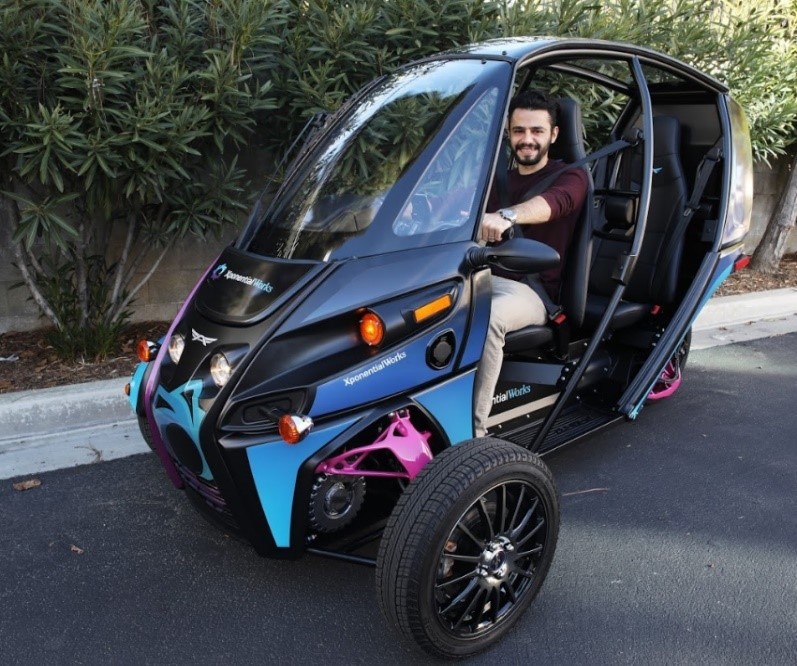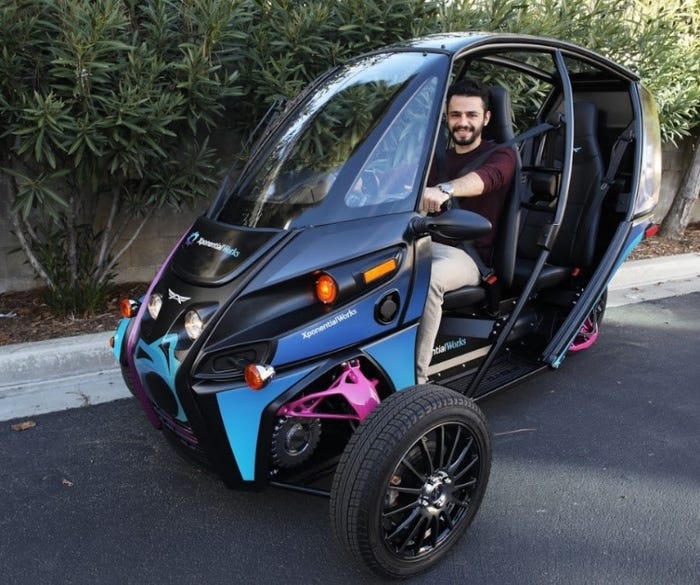XponentialWorks teamed up with Arcimoto to lightweight the suspension of its fun utility EV with the goal of boosting performance and overall ride quality.
June 4, 2020

Tech investment firm, XponentialWorks, used its generative design company, ParaMatters, to create light-weighted parts for Arcimoto’s fun utility vehicle (FUV). The goal was to reduce cost and improve performance while making the vehicle even more environmentally friendly.
|
Light-weighted parts took the place of heavier, traditionally manufactured parts while enabling Arcimoto’s FUVs to drive farther distances on a single charge. The light-weighting also improved acceleration and handling. (Image source: XponentialWorks) |
The newly designed parts are designed to take the place of heavier, regularly manufactured parts, allowing Arcimoto’s electric vehicles to drive farther distances on a single charge. The light-weighting also improved acceleration and delivered better handling. The cost of the parts was also reduced during production. The light-weighted designs were made using artificial intelligence and computer-generated design by ParaMatters, an XpoentialWorks company.
A Test Drive Becomes a Project
XpotentialWorks CEO, Avi Reichental met Mark Frohnmayer, CEO of Arcimoto, at an event where the FUV was on display. “I had an opportunity to test drive the vehicle,” Reichental told Design News. “I was blown away with his utility fun vehicle. I asked if he was interested in light-weighting. Mark said it was 1400 pounds and he wanted to bring it down, so we partnered in taking it all the way to production with lighter parts. We ran it through Paramatters, which is one of our portfolio companies. It’s does optimization and light-weighting.”
The generative design algorithms from ParaMatters offered a number of design choices that offered lighter weight without sacrificing the structural integrity of the part. “We uploaded the CAD and set the light-weighting objectives and we just clicked the button and our algorithms did the resolutions – and out comes the files with that are ready to print,” said Reichental.
In order to ensure that lighter parts meet the structural requirements, simulation was part of the design process. “When we get the design, we also get all of the results of the simulation, so we can go forward knowing we met the loading condition, including vibration and we can 3D print,” said Reichental. “It took about a day and a half from the time we received the CAD files. Then we looked at the parts by size and functionality. With the small parts, we went direct and printed them.”
The Technology Behind the Light-Weighting
ParaMatters’s CogniCAD software uses AI to create designs. Engineers enter design goals and materials parameters. The AI explores design permutations based on the design concept and provides an optimal solution to light-weight parts. CogniCAD automatically combines all the different parts into one homogeneous assembly instead of creating multiple parts that need to be manufactured. Arcimoto FUV’s light weighted parts can then be 3D printed to produce the final product.
Using a combination of AI-generated designs and ultra-fast 3D printing processes, the team was able to create complex geometric structures that reduced the weight of the vehicles. The result was improved performance, lower production costs, and savings on battery power. “In this new age of industry 4.0 manufacturing, no one company can do it all alone,” said Reichental. “This project demonstrates the power of curating relationships and building joint innovation programs that pool together resources and expertise from complementary organizations to create practical tractable products in record time.”
RELATED ARTICLES:
Rob Spiegel has covered automation and control for 19 years, 17 of them for Design News. Other topics he has covered include supply chain technology, alternative energy, and cyber security. For 10 years, he was owner and publisher of the food magazine Chile Pepper.
About the Author(s)
You May Also Like






